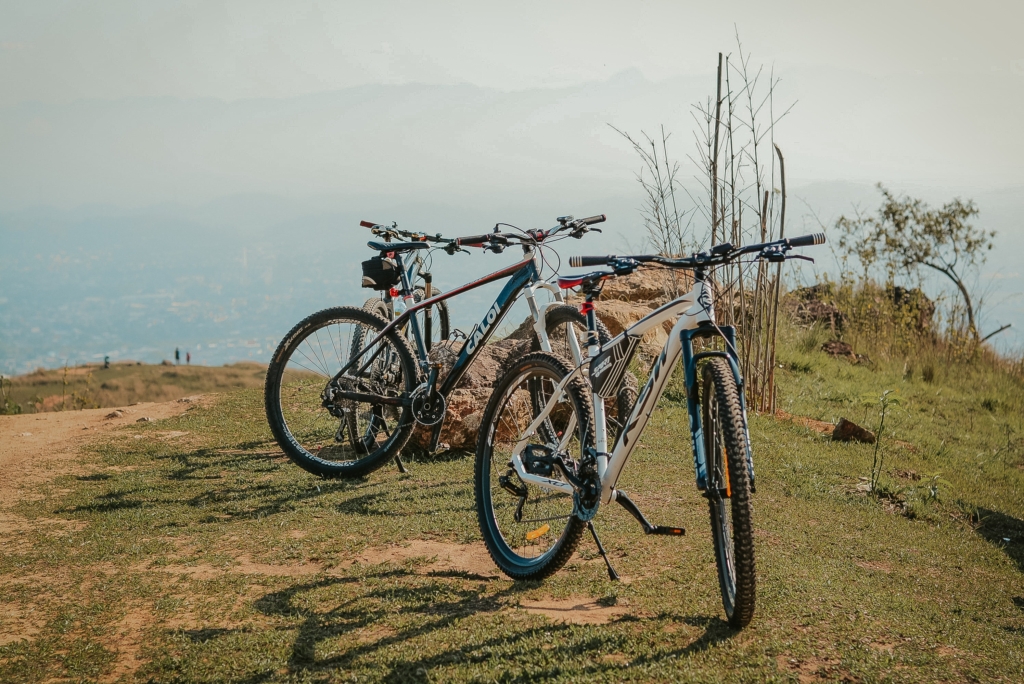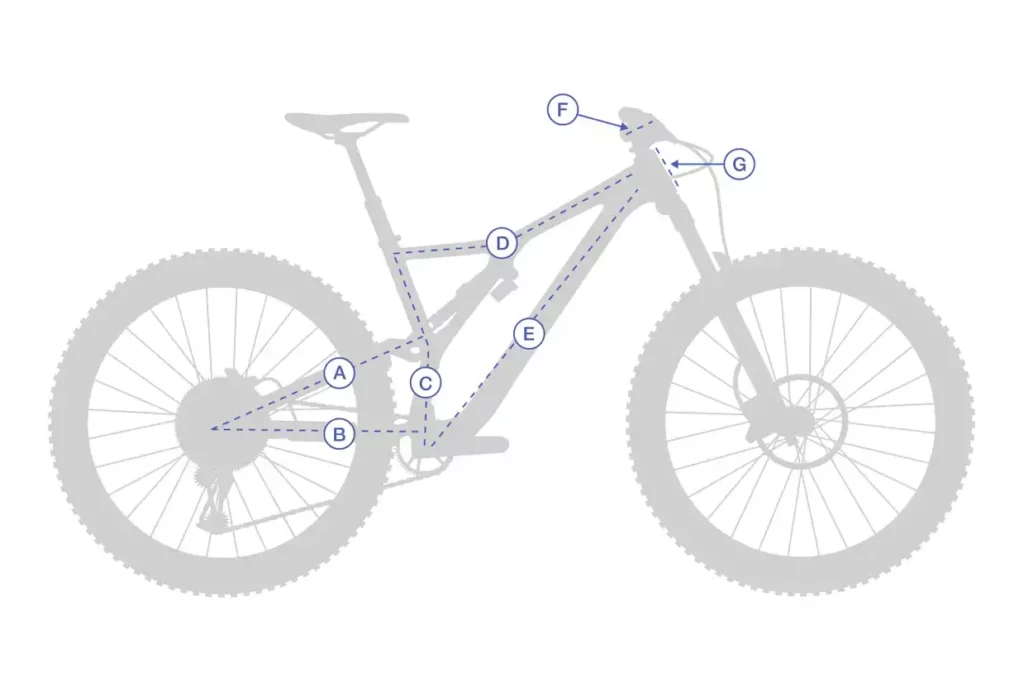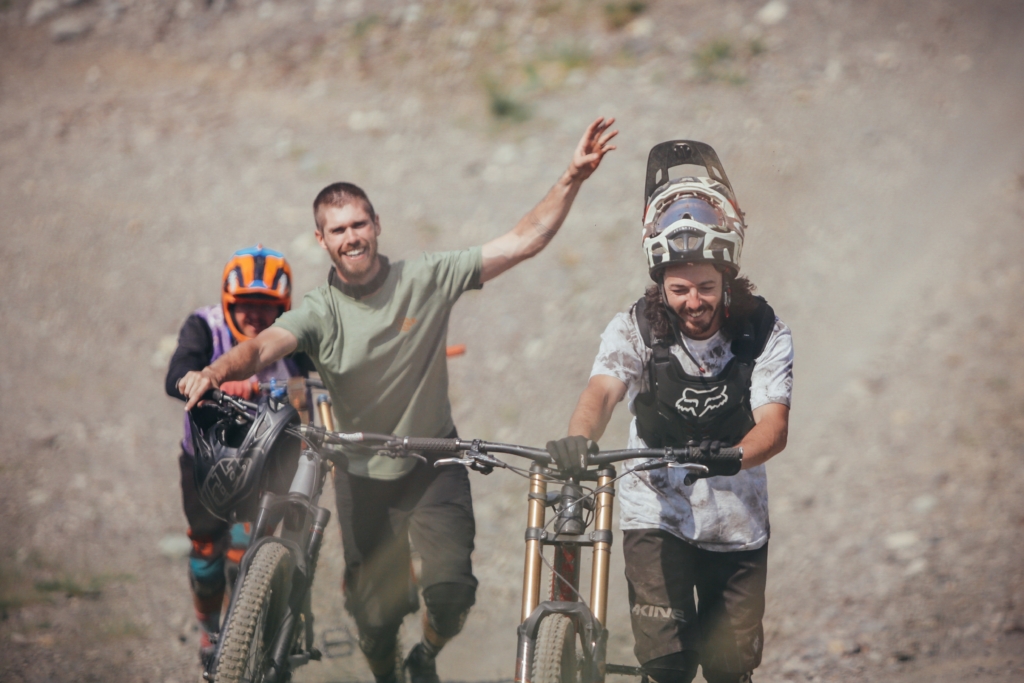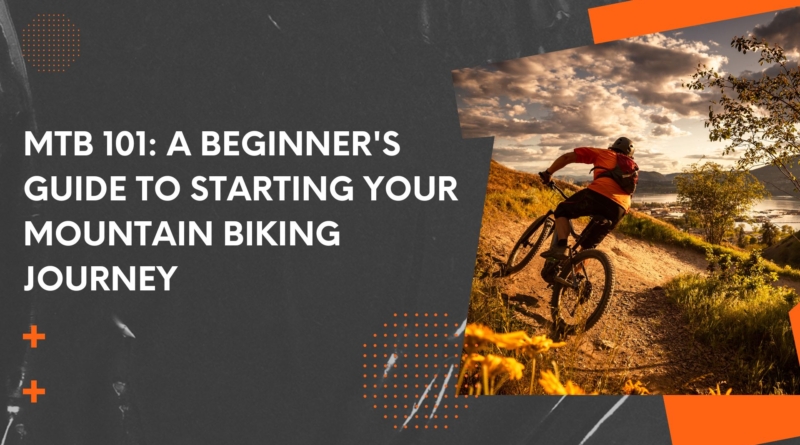MTB 101: A Beginner’s Guide to Starting Your Mountain Biking Journey
Are you looking for a thrilling outdoor activity that combines adrenaline and nature? Mountain biking might be the perfect sport for you! But if you’re a beginner, starting out can be overwhelming. There are so many different types of bikes, gears, and trails to choose from. Fear not, this beginner’s guide to mountain biking will provide you with all the essential information you need to get started in the world of mountain biking. From choosing the right bike and gear to basic riding techniques, we’ve got you covered. So, let’s dive in and discover the beauty and excitement of mountain biking!
Choosing the Right Mountain Bike

Choosing the right mountain bike is crucial for a fun and safe mountain biking experience. With so many options available, it can be overwhelming for beginners to decide which type of mountain bike is right for them. In this section, we’ll discuss the different types of mountain bikes, including cross-country, trail, enduro, downhill, and fat bikes. We’ll also cover how to choose the right size and fit for your body, as well as the different components of a mountain bike, including suspension, brakes, and gears.
Types of mountain bikes
Cross Country (XC) Bikes: Cross-country mountain bikes are designed for speed and efficiency on smooth and rolling terrain. They have lightweight frames, narrow tires, and a narrow range of gears. They’re perfect for long-distance rides and races, and for those who prioritize speed and endurance.
Trail Bikes: Trail bikes are the most popular type of mountain bike, as they’re designed to handle a wide range of terrain. They have suspension systems that offer a comfortable ride on rough trails, wider tires for better grip, and a wider range of gears. They’re versatile and suitable for riders of all levels.
All-Mountain Bikes: All-mountain bikes are designed for more technical and challenging terrain. They have a full suspension system with greater travel, wider tires for improved traction, and a sturdier frame. They’re perfect for riders who want to tackle steeper climbs and descents and enjoy more aggressive riding.
Downhill Bikes: Downhill bikes are designed for fast descents and steep, technical terrain. They have a full suspension system with greater travel, wider and heavier tires, and a sturdy frame. They’re perfect for riders who want to tackle challenging downhill trails and obstacles.
Fat Bikes: Fat bikes have extra-wide tires that provide better traction and flotation on soft and snowy terrain. They’re perfect for winter riding, sand, and other soft surfaces. They’re also great for riders who want to explore less traveled trails and terrains.
Which One is for the MTB beginner?
For a beginner in mountain biking, I would suggest choosing a cross-country (XC) mountain bike or a trail bike. These types of bikes are versatile and designed to handle a wide range of terrain, making them great for beginners who want to try out different types of riding.
Cross-country mountain bikes are lightweight and efficient, making them great for longer rides or races. They have a more upright riding position and are designed for speed and agility. They usually have around 100mm of suspension travel, which is sufficient for most beginner trails.
Trail bikes are a bit more versatile than XC bikes and are great for riders who want to explore different types of terrain. They have more suspension travel, typically around 120-140mm, which helps to absorb larger bumps and drops. They have a more relaxed riding position, which is more comfortable for longer rides. Want to know the best MTB for beginners? Check out our reviews.
Choosing the right size and fit

Choosing the right size and fit for your mountain bike is crucial to ensure a comfortable and safe ride. A bike that is too small or too big can affect your control, balance, and overall performance.
To find the right size of mountain bike for you, consider your height, inseam length, and riding style. You can consult with a local bike shop or use online sizing charts to determine the appropriate size. It’s also important to test ride different sizes and models to find the one that feels the most comfortable and fits your riding needs.
Mountain bike saddle height
Finding the perfect MTB bike size and fit is crucial for a comfortable and enjoyable ride. But how do you determine the right size for you? It’s not just about your height, as different body proportions and riding styles can affect your choice of bike size.
One of the first things you should do when trying out a bike is to set the saddle at the right height. If you can’t comfortably adjust the saddle, it may be a sign that the bike you’re riding is not the right size for you.
A general rule of thumb for efficient pedaling is to add 13cm (5in) to your trouser leg measurement from the center top of the saddle to the center top of the pedal. However, to get a more accurate measurement, you should sit squarely on the saddle with the cranks in a straight-up/straight-down position, keeping in mind both comfort and efficiency.
The right fit also depends on the type of riding you’ll be doing. If you plan on tackling technical trails, a smaller frame size might be more maneuverable, while longer rides might require a larger frame for added comfort.
It’s always a good idea to try out different bike sizes and get a professional fitting to ensure you have the right MTB bike size and fit for your needs.
How far away should the handlebars be from the saddle?
The distance between the handlebars and saddle on a mountain bike can vary depending on personal preference, riding style, and bike fit. However, as a general guideline, a beginner rider should aim for a distance where they can comfortably grip the handlebars without feeling too stretched out or cramped. This can be achieved through adjusting the stem length or handlebar position. It’s recommended to seek the advice of a professional bike fitter or experienced rider for proper bike fit and adjustments.
Different components of a mountain bike

Mountain bikes are made up of many components that work together to make the bike function properly. Here are some of the main components of a mountain bike:
A. Seatstay – The seatstay is a small tube that runs from the seat tube to the rear axle of the bike. It helps to absorb shock and provides stability to the bike.
B. Chainstay – The chainstay is another small tube that runs from the bottom bracket to the rear axle. It holds the chain and provides stability to the bike.
C. Seat tube – The seat tube is the tube that runs from the bottom bracket to the top of the bike frame. The seatpost is inserted into the seat tube, and the saddle is mounted on top of the seatpost.
D. Top tube – The top tube is the tube that runs from the head tube to the seat tube. It provides stability to the bike frame and is an important component for determining the bike’s size and fit.
E. Down tube – The down tube is the tube that runs from the head tube to the bottom bracket. It provides stability to the bike frame and is an important component for determining the bike’s size and fit.
F. Stem – The stem is the component that connects the handlebars to the steerer tube of the bike’s fork. It comes in different lengths and angles to help adjust the rider’s position on the bike.
G. Head tube – The head tube is the tube at the front of the bike frame that holds the fork and connects the top and down tubes. It also houses the bearings that allow the fork to turn smoothly.
All of these components work together to create a stable and efficient ride on the mountain bike. It’s important to choose the right size and fit for each component to ensure a comfortable and safe riding experience.
Essential Gear for Mountain Biking

When it comes to mountain biking, having the right gear is just as important as having the right bike. The right gear can keep you safe and comfortable during your ride, as well as enhance your overall experience. Here are some essential gear items to consider for your next mountain biking adventure:
Helmet: This is the most important piece of gear for any type of biking, and mountain biking is no exception. A good quality helmet can protect your head from injury in case of a fall or accident. Look for a helmet that fits well and has plenty of ventilation to keep you cool on hot days.
Gloves: Gloves not only provide protection for your hands in case of a fall, but they also provide grip and control on the handlebars. Look for gloves with padded palms and breathable material to keep your hands comfortable.
Shoes: The right shoes can make a big difference in your performance and comfort on the bike. Look for shoes with a stiff sole and good traction for better power transfer and grip on the pedals. Choose shoes that fit well and are comfortable for long rides.
Clothing: Dress appropriately for the weather conditions and the type of trail you will be riding. Moisture-wicking fabric is ideal for keeping you dry and comfortable, and layers can help regulate your body temperature.
Protective Gear: For more advanced riding, protective gear such as knee and elbow pads, body armor, and a full-face helmet may be necessary. These can provide added protection and peace of mind when tackling more technical trails.
Other Accessories: Other recommended accessories include a hydration pack or water bottle, a bike tool kit, and a bike computer to track your ride data. These items can help you stay hydrated, prepared for mechanical issues, and on track with your fitness goals.
In summary, investing in the right gear can make your mountain biking experience safer and more enjoyable. Remember to prioritize safety and comfort when selecting your gear, and consider upgrading to more advanced protective gear as you progress in your mountain biking skills. You can also shop your gear starts here: Moosejaw which is a big brand for biking gears at good prices.
Basic Mountain Biking Techniques

As a beginner to mountain biking, it’s important to understand the basic techniques to help you navigate the trails with confidence and control. Mountain biking is an exciting and challenging sport that requires both physical and technical skills. In this section, we will cover the basic body position techniques that every beginner should know to improve their mountain biking skills and enhance their overall riding experience.
Body position
Body position is a crucial aspect of mountain biking that affects your balance, stability, and control on the bike. A good body position helps you navigate through rough terrain, maintain traction, and absorb shock.
The basic body position for mountain biking involves standing up on the pedals with your knees and elbows slightly bent, and your weight centered over the bike. Your feet should be level on the pedals, with your heels down and your toes up, which helps you maintain good balance and control.
It’s important to keep your eyes focused ahead on the trail, and not on your front wheel. This helps you anticipate obstacles and plan your line through the trail. Additionally, you should keep your arms and shoulders relaxed to absorb shocks and bumps on the trail, which helps you maintain better control.
Braking and shifting
As you progress in your mountain biking skills, you’ll learn more advanced body position techniques, such as leaning the bike for better cornering or shifting your weight forward or backward for better traction.
Braking and shifting are two essential techniques in mountain biking that can greatly improve your ride and safety. Braking allows you to slow down and control your speed on descents, while shifting enables you to maintain an efficient cadence and tackle different terrains.
When it comes to braking, it’s important to use both your front and rear brakes in combination to maximize your stopping power. The front brake provides more stopping power, but too much pressure can cause you to fly over the handlebars. To avoid this, you should apply both brakes smoothly and gradually, using more pressure on the rear brake to avoid skidding.
Shifting gears is also a key technique in mountain biking that can help you navigate different terrains and maintain an efficient cadence. A high gear is ideal for flat and smooth terrain, while a low gear is better for steep climbs and rough terrain. As a beginner, it’s important to anticipate terrain changes and shift gears accordingly to avoid losing momentum or getting stuck.
It’s important to practice braking and shifting techniques in a controlled environment before hitting the trails. Gradually increase your speed and difficulty to build your skills and confidence. Remember to keep your body position in mind while braking and shifting – keep your weight centered over the bike and your pedals level for maximum control.
In summary, mastering the techniques of braking and shifting can greatly improve your mountain biking experience as a beginner. Be sure to practice in a controlled environment and gradually increase your difficulty to build your skills and confidence. With time and practice, you’ll be able to tackle any terrain with ease.
Cornering and climbing
Once you have mastered braking and shifting on your mountain bike, it’s time to learn about cornering and climbing. These techniques are essential for navigating the trails and taking your mountain biking skills to the next level.
Cornering is all about finding the right line, maintaining speed, and leaning into the turn. As you approach a corner, shift your weight towards the outside pedal and turn your handlebars in the direction of the turn. Keep your eyes focused on the exit of the corner and lean your body into the turn, while keeping your inside foot up. This will help you maintain traction and control as you corner.
Climbing requires a different approach, as you need to conserve your energy and maintain traction on steep terrain. First, make sure you are in the right gear before you start the climb. Stay seated and keep your upper body relaxed, with your eyes focused on the trail ahead. Shift your weight towards the front of the bike to keep the front wheel down, and use your body weight to maintain traction on the rear wheel.
As you climb, you may need to shift your weight forward or back to maintain balance and control. Use your gears to adjust your speed and cadence, and try to maintain a steady rhythm to conserve your energy.
With practice, you’ll develop the skills and confidence to tackle even the most challenging climbs and corners on the trails. Just remember to start slow, take your time, and always wear the appropriate safety gear.
Descending and dropping
Descending and dropping are two essential techniques for mountain biking that require proper body positioning, bike control, and confidence. Descending refers to the technique of safely navigating a trail downhill, while dropping involves riding off a drop or ledge.
When descending, it’s important to shift your weight back to maintain balance and control. Keep your arms and legs relaxed, and use your body as a shock absorber to handle the bumps and obstacles along the way. Look ahead and plan your line, using your brakes to control your speed when needed.
For drops, approach the drop with enough speed to clear it, but not so much that you lose control. As you approach the edge, shift your weight back, and keep your arms and legs relaxed. As you go off the drop, keep your front wheel up to avoid landing on it, and land on your rear wheel, absorbing the impact with your legs.
Practice these techniques in a safe environment and gradually build up your skills and confidence. As you become more comfortable with descending and dropping, you can take on more challenging terrain and push yourself to new limits. Remember to always prioritize safety and wear proper protective gear, such as a helmet, gloves, and knee pads.
Trail Etiquette and Safety

Trail etiquette and safety are critical aspects of mountain biking. As a rider, it is essential to know the basic trail rules and regulations to ensure that everyone enjoys the trail safely. Sharing the trail with others is a vital part of trail etiquette. Be sure to respect other riders, hikers, and wildlife along the way. Yield to hikers and slower riders, and always let others know when you are passing.
Basic trail rules include keeping to the right side of the trail, staying within the marked boundaries, and using appropriate signals when passing other riders or obstacles. It is also essential to respect the environment and wildlife by leaving no trace and avoiding off-trail riding.
Proper trail maintenance and conservation are crucial to preserving the trail for future generations. Be sure to respect any closures, follow posted signs and rules, and report any trail damage or hazardous conditions to the appropriate authorities.
Finding the Right Trail
Finding the right trail is an important step for beginner mountain bikers. When starting out, it’s essential to find trails that match your skill level and experience. This will ensure a safe and enjoyable riding experience.
There are various types of trails suitable for beginners, such as beginner-friendly trails with minimal obstacles and technical features, fire roads, and bike paths. It’s important to choose a trail that matches your skill level and comfort level, and gradually progress to more advanced trails as your skills and confidence improve.
Online resources, such as Trailforks, MTB Project, and AllTrails, are great tools for finding trails in your area. These websites provide detailed trail maps, difficulty ratings, and user reviews, allowing you to choose the best trail for your needs.
In addition to choosing the right trail, it’s important to follow basic trail etiquette and safety tips. This includes yielding to other trail users, staying on designated trails, carrying essential gear such as a repair kit and first aid kit, and wearing appropriate safety gear such as a helmet and gloves.
Overall, finding the right trail is a crucial aspect of mountain biking for beginners. By choosing appropriate trails and following basic trail etiquette and safety tips, you can enjoy a safe and rewarding riding experience while improving your skills and confidence on the bike.
Joining a Mountain Biking Community

Joining a mountain biking community is a great way for beginners to get more involved in the sport and improve their skills. Joining a club or group can provide a variety of benefits, such as access to organized rides, trail maintenance opportunities, and group instruction.
To find a community, start by doing some research online. Look for local mountain biking groups or clubs that welcome riders of all skill levels. You can also check with your local bike shop for recommendations.
Once you’ve found a community, be sure to attend group rides and events. This is a great way to meet other riders and learn new skills. Don’t be afraid to ask questions and seek advice from more experienced riders.
There are also a variety of resources available for connecting with other riders. Online forums and social media groups can provide a platform for sharing tips, discussing trails, and planning rides. Additionally, many mountain biking communities host their own websites or Facebook pages where riders can connect with each other and stay up to date on events and trail conditions.
Remember, safety is always a top priority when riding on trails, especially as a beginner. Be sure to follow basic trail rules and regulations, and always wear appropriate safety gear such as a helmet and gloves. By joining a mountain biking community and connecting with other riders, beginners can enjoy the sport while also learning how to ride safely and responsibly.
In Conclusion
Mountain biking is an exhilarating and rewarding sport that can provide a great sense of accomplishment and adventure. As a beginner, it’s important to choose the right bike, learn basic techniques, and practice trail etiquette and safety.
Remember to always wear proper gear, including a helmet, gloves, and appropriate shoes and clothing. When choosing trails, consider your skill level and choose routes that are suitable for beginners.
Joining a mountain biking community can provide you with valuable resources, support, and the opportunity to connect with other riders. With dedication and practice, you can improve your skills and enjoy the many benefits of mountain biking, including improved physical fitness and mental well-being.
So what are you waiting for? Grab your bike and hit the trails!
